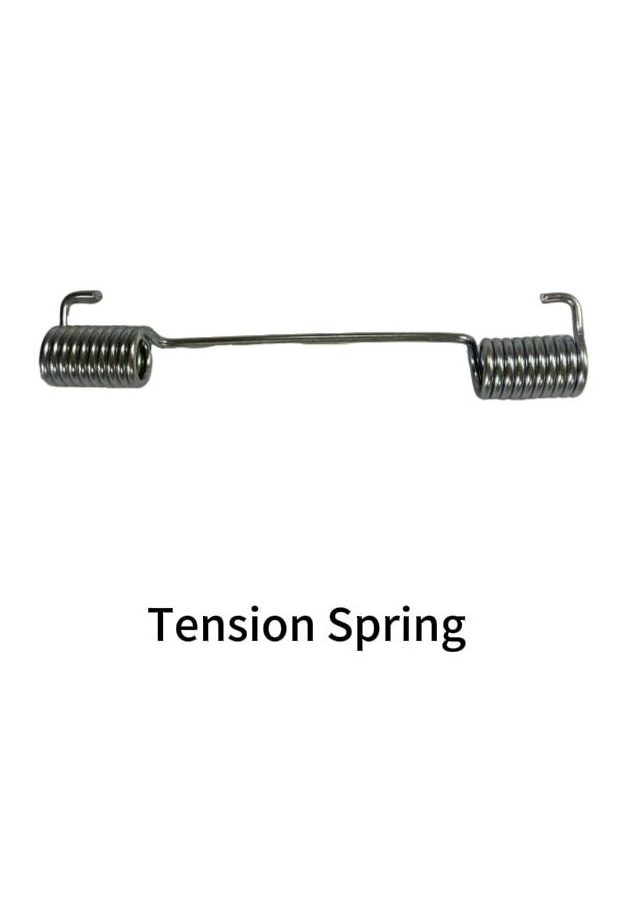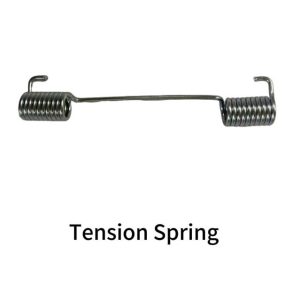Tension Spring
A tension spring (or extension spring) is a common type of mechanical spring designed to withstand axial tensile forces and return to its original shape after unloading. Below is a detailed introduction to tension springs:
- Basic Structure
- Hook Designs: The ends of tension springs typically feature hooks (e.g., round hooks, half hooks, English hooks) for attachment and force application.
- Close-Wound Coils: In their free state, the coils are usually tightly wound (with preload stress) to ensure even force distribution.
- Working Principle
- Elastic Deformation: When stretched, the coils expand, creating elastic deformation within the material and storing energy.
- Restoring Force: Upon force removal, the spring returns to its original length, releasing stored energy.
- Key Parameters
- Material: Commonly made of high-carbon steel, stainless steel (e.g., 304/316), music wire, or alloy steel.
- Wire Diameter (d): Diameter of the spring wire.
- Outer Diameter (OD): Maximum diameter of the spring.
- Free Length (L₀): Total length when unloaded.
- Stiffness (k): Force required per unit deformation (N/mm or lb/in).
- Maximum Extended Length: Exceeding this may cause permanent deformation.
- Applications
- Industrial Machinery: Valves, clutches, automated assembly lines.
- Automotive: Brake systems, suspension components.
- Household Appliances: Washing machine counterweights, switch buttons.
- Medical Equipment: Surgical instruments, rehabilitation devices.
- Selection Considerations
- Load Requirements: Choose stiffness and material based on maximum force and displacement.
- Environmental Factors: Opt for stainless steel or coated springs in humid conditions.
- Fatigue Life: High-cycle designs for frequent use.
- Installation Space: Ensure hook dimensions match connecting parts.
- Common Issues
- Permanent Deformation: Caused by overloading or material fatigue.
- Hook Breakage: Due to stress concentration or improper installation.
- Corrosion: Occurs in harsh environments without corrosion-resistant materials.
- Maintenance & Replacement
- Regular Inspection: Check for rust, deformation, or cracks.
- Lubrication: Apply light oil to friction points (if needed).
- Replacement Criteria: Replace when elasticity significantly declines or damage occurs.
Shuangyuan produce various tension spring with wire diameter from 0.03-16mm


Tension Spring Tension Spring

Tension Spring


